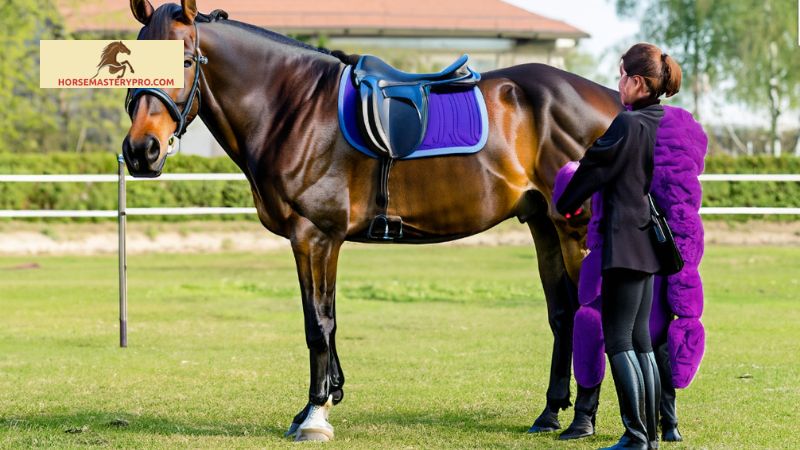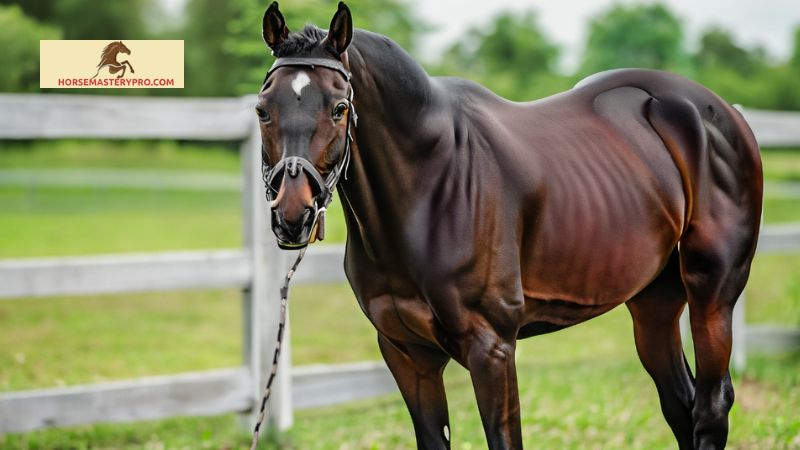Uncover the captivating horse vaulting history: From its revival in the 20th century to international competitions and evolving rules, explore this equestrian art’s modern journey.
Introduction

Have you ever wondered about the fascinating art of Horse Vaulting History? Where did it originate, and why is it still captivating audiences today? Join me on a journey back in time as we explore the rich history of horse vaulting and unravel the secrets behind this thrilling equestrian sport.
A Brief Overview of Horse Vaulting as a Sport
Horse vaulting, also known as equestrian vaulting, is a discipline that combines gymnastics and dance atop a moving horse. Picture acrobats gracefully performing intricate movements, pirouettes, and leaps, all while maintaining perfect harmony with their equine partners. It’s a mesmerizing spectacle that showcases the extraordinary bond between humans and horses.
The Importance of Understanding the History of Horse Vaulting
To truly appreciate the art of horse vaulting, we must delve into its historical roots. By understanding its origins and evolution, we gain a deeper comprehension of the techniques, equipment, and cultural significance associated with this unique sport. Moreover, exploring the past offers insights into the developmental milestones that have shaped horse vaulting into what it is today.
Are you ready to uncover the captivating history of horse vaulting? In the following sections, we will explore ancient civilizations’ involvement, the evolution of techniques and equipment, and the cultural impact of horse vaulting throughout different eras. So, saddle up and let’s embark on this exhilarating journey through time!
Stay tuned for Section II, where we’ll dive into the origins of horse vaulting, unearthing its ancient connections and historical evidence from various cultures.
Stay tuned for the next section of this article, where we will explore the origins of horse vaulting, unearthing its ancient connections and historical evidence from various cultures.
Origins of Horse Vaulting

Ancient Civilizations and their Involvement in Horse Vaulting
From ancient times, horse vaulting has captivated civilizations across the globe. In ancient Greece, the birthplace of the Olympic Games, horse vaulting was an integral part of equestrian competitions. Skilled athletes showcased their agility and strength while performing gravity-defying maneuvers on horseback. Similarly, the Romans, known for their grandeur and love for spectacle, incorporated horse vaulting into their chariot races and gladiatorial games.
Historical Evidence of Horse Vaulting in Different Cultures
As we delve deeper into history, we uncover evidence of horse vaulting in diverse cultures. In Central Asia, nomadic tribes such as the Mongols and the Scythians displayed their equestrian prowess through horse vaulting. These ancient cultures regarded horse riding as an essential skill for warfare and hunting, and horse vaulting was an impressive display of their mastery over these noble creatures.
Role of Horse Vaulting in Equestrian Activities throughout History
Horse vaulting has played a significant role in various equestrian activities throughout history. In medieval times, knights practiced horse vaulting as part of their training, enhancing their balance and dexterity in combat. It was also an essential component of medieval tournaments, where brave knights showcased their equestrian skills and entertained the masses with daring acrobatics on horseback.
Beyond the battlefield, horse vaulting had cultural and social significance. In Renaissance Europe, it was a popular form of entertainment at royal courts, symbolizing the aristocracy’s status and refined tastes. Even today, horse vaulting continues to be a cherished tradition in many cultures, celebrating the bond between humans and horses.
In the next section, we will explore the fascinating evolution of horse vaulting, tracing the development of techniques and equipment over time. Stay tuned as we uncover the remarkable innovations that have shaped this captivating sport.
Evolution of Horse Vaulting
Development of Horse Vaulting Techniques and Equipment Over Time
As horse vaulting evolved through the ages, so did the techniques and equipment used by performers. Initially, horse vaulting focused on basic movements, such as mounting and dismounting while the horse was stationary. However, as equestrian skills advanced, vaulters began to perform more daring acrobatic maneuvers while the horse was in motion.
Innovations in equipment played a crucial role in enhancing safety and performance. The introduction of specialized vaulting surcingles, which are padded and equipped with handles, provided stability for the vaulter and ensured a secure grip. Additionally, the use of lunger, a person who controls the horse on a long lunge line, became prevalent, allowing for controlled movement and precise timing during vaulting routines.
Contributions of Notable Individuals in Shaping Horse Vaulting as a Sport
Throughout history, visionary individuals have left an indelible mark on horse vaulting, shaping it into the sport we know today. One such influential figure is Kurt Albrecht, a German gymnast who is often referred to as the “Father of Modern Vaulting.” Albrecht introduced systematic training methods, standardized exercises, and established the first international rules for horse vaulting. His contributions laid the foundation for the organized development of the sport.
Another notable individual is Elisabeth “Liza” Smith, an American vaulter who revolutionized horse vaulting with her dynamic and artistic performances. Smith’s innovative routines combined gymnastics, ballet, and modern dance, pushing the boundaries of creativity and athleticism in the sport.
Influence of Horse Vaulting on Other Disciplines and Equestrian Sports
Horse vaulting’s influence extends beyond its own domain, inspiring and influencing other equestrian disciplines. The balance, coordination, and strength required for horse vaulting have been recognized as essential skills for various disciplines, including dressage, show jumping, and eventing. Many successful riders and trainers credit their foundation in horse vaulting for their achievements in these disciplines.
Moreover, the mesmerizing performances of horse vaulting have captivated audiences worldwide, popularizing the sport and bringing attention to equestrian activities as a whole. By showcasing the incredible partnership between humans and horses, horse vaulting has played a significant role in promoting the beauty and grace of equestrian sports to a broader audience.
Stay tuned for Section IV, where we will delve into the captivating world of horse vaulting in medieval times, uncovering its role in tournaments and the cultural significance it held.
Horse Vaulting in Medieval Times

Role of Horse Vaulting in Medieval Tournaments and Performances
In the medieval era, horse vaulting played a pivotal role in tournaments and performances, captivating audiences with its displays of skill, bravery, and sheer athleticism. Knights and noble riders showcased their prowess by executing daring vaulting maneuvers while mounted on their trusty steeds. These exhibitions not only entertained the masses but also served as a demonstration of a knight’s physical prowess and horsemanship.
Training Methods and Skills Required for Horse Vaulting During this Period
Mastering horse vaulting in medieval times required rigorous training and exceptional coordination. Vaulters had to develop core strength, balance, and precise timing to execute complex maneuvers with grace and precision. Training methods included exercises such as practicing on wooden horses, trampoline-like devices, and vaulting over obstacles to enhance agility and control.
Skills essential for successful horse vaulting in the medieval period included mastering various mounts and dismounts, executing jumps and somersaults, and maintaining stability while performing acrobatic routines on horseback. Vaulters also had to learn to communicate effectively with their horses, building a strong bond of trust and understanding.
Cultural Significance and Social Status Associated with Horse Vaulting in Medieval Times
Horse vaulting held immense cultural significance in medieval times, symbolizing the virtues of chivalry, courage, and honor. It was not only seen as an art form but also as a reflection of a knight’s social status and skill. Knights who excelled in horse vaulting were highly revered, showcasing their noble lineage and prowess in the equestrian arts.
Furthermore, horse vaulting served as a means of entertainment for the aristocracy and the general public alike. Spectators marveled at the daring displays of athleticism and admired the harmony between horse and vaulter. The popularity of horse vaulting in medieval times solidified its position as an esteemed art form and contributed to its continued legacy in the world of equestrian sports.
Stay tuned for the next section of this article, where we will delve into the modern era of horse vaulting, exploring its revival as a competitive sport and its impact on the equestrian world.
Horse Vaulting Today: Embracing the Legacy and Looking to the Future
As we’ve journeyed through the annals of horse vaulting history, we arrive at the present, where this captivating sport continues to thrive. Horse vaulting has experienced a remarkable revival as a competitive discipline in the 20th century, captivating audiences worldwide with its awe-inspiring displays of athleticism and artistry.
Revival of Horse Vaulting as a Competitive Sport in the 20th Century
In the early 20th century, horse vaulting underwent a resurgence, transitioning from a traditional equestrian art form to a recognized sport. This revival brought about a renewed interest in the discipline, with enthusiasts seeking to push the boundaries of what was possible. The sport’s modernization paved the way for standardized rules, enhanced safety measures, and the establishment of international organizations dedicated to horse vaulting.
International Organizations and Competitions Dedicated to Horse Vaulting
Today, horse vaulting has a global presence, with numerous organizations dedicated to promoting and advancing the sport. The International Equestrian Federation (FEI) governs horse vaulting internationally, ensuring consistent standards and facilitating international competitions. Prominent events like the World Equestrian Games and the FEI World Cup Vaulting showcase the incredible talent and skill of vaulters from around the world.
Evolution of Rules, Scoring, and Safety Measures in Modern Horse Vaulting
The evolution of horse vaulting as a sport has not only brought about standardized rules but also refined scoring systems to evaluate performances objectively. Judges assess various elements such as difficulty, technique, harmony, and choreography, awarding scores that reflect the vaulter’s execution. Furthermore, modern horse vaulting prioritizes the safety of both the vaulter and the horse, implementing stringent safety measures to prevent accidents and injuries.
As horse vaulting continues to captivate audiences and inspire new generations, the future of this remarkable sport looks promising. Advancements in training techniques, equipment, and technology offer endless possibilities for pushing the boundaries of what can be achieved in the arena.
In conclusion, the history of horse vaulting is a testament to the enduring bond between humans and horses. From its ancient origins to its modern-day revival, this captivating art form has left an indelible mark on the world of equestrian sports. By exploring its rich past, embracing its present achievements, and looking towards the future, we ensure that the legacy of horse vaulting remains alive and thriving.
Remember, for more captivating insights into the world of equestrian sports, visit Horsemasterypro.com and embark on an extraordinary journey through the fascinating realm of horsemanship.


